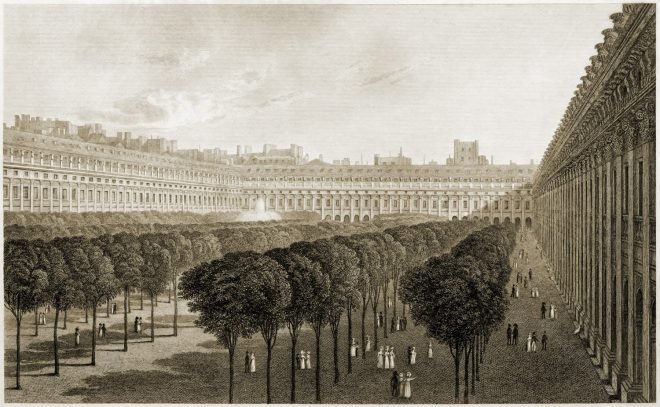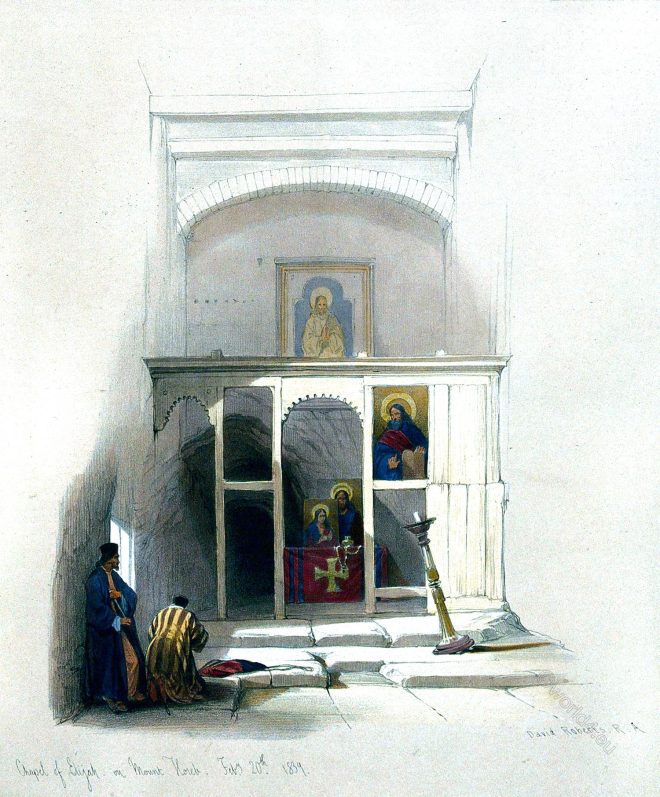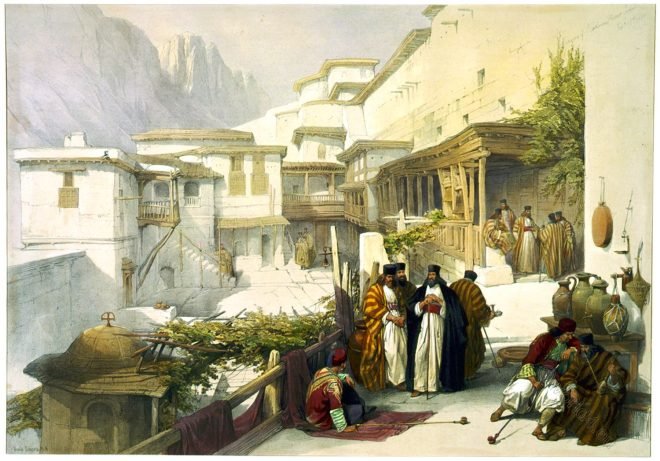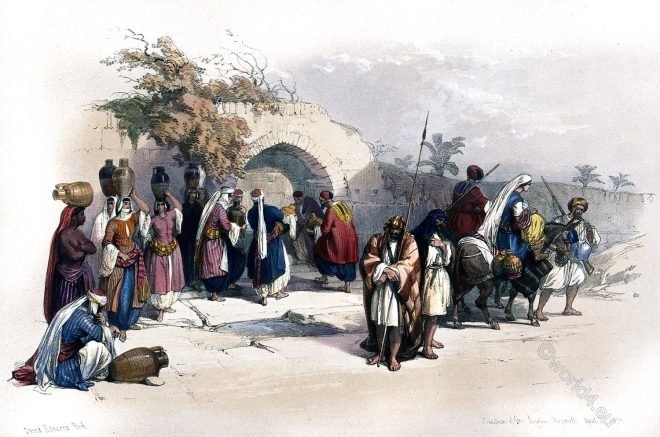This splendid building was commenced in the year 1629, by the Cardinal de Richelieu, from the designs of Le Mercier.
Tag: Grand Tour
The Grand Tour, also known as the Cavaliers’ Tour, was the name given to an obligatory journey undertaken since the Renaissance by the sons of the European nobility, later also by the upper middle classes, through Central Europe, Italy, Spain and also to the Holy Land. In England in particular, the Grand Tour found rich literary expression in the 18th century.
The immersion of the pilgrims in the Jordan River
In this View Achmet Aga, the Governor of Jerusalem, with a part of his Arab guard, occupy the foreground.
Encampment of pilgrims at Jericho
At Easter the neighbourhood of Jericho is frequented by Pilgrims, who come to purify themselves in the River Jordan.
Southeast view of the Temple of Poseidon at Sounion, Greece.
The ancient Greek temple of Poseidon at Cape Sunnius, built between 444-440 BC, is one of the main monuments of Athens’ Golden Age.
Encampment of the Alloeen in Wady Araba.
… look around on the ghastly and almost unearthly desolation of this scene, … the trials of the Israelites were far greater than we had ever before imagined.
View of the village of Nikali, near Larissa, the capital of Thessaly, Greece.
The nearer objects in the picture are those in the village of Nikali, where the principal house is the pyrgos, or tower, in which the agha is represented smoking.
Orthodox monks in the Chapel of Elijah on Mount Sinai, Egypt.
A view of the interior of the Chapel of Elijah on Mount Sinai, Egypt. The Orthodox chapel encloses an outcrop of rock that tradition equates with the source for the stone tablets of the Ten Commandments.
Principal court of the convent of St. Catherine, Mount Sinai.
The costume of the Monks of St. Catherine. The Superior is distinguished by a black cloak, the Brotherhood wear robes of the striped brown cloth.
Samaria the ancient Capital of the Kingdom of Israel.
Group of horseriders on a plateau overlooking a landscape with the city of Sebaste, formely Samaria.
The Fountain of Mary or Virgin Fountain at Nazareth.
The figures introduced were all drawn on the spot, and convey an accurate representation of the female costume of Nazareth.










